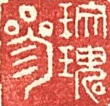PEDIATRIC DIAGNOSIS – WIND, QI AND LIFE GATES
In pediatrics, we have this problem in that we can’t really palpate the way we palpate adults. So we have a very special diagnosis, which is part of the Looking diagnosis for children. And we look at a vein on the index finer. This is only good for children under the age of 3, because after that the area in this space thickens. Basically, we look at this vein (lateral side of index finger). Now if you look at your own hand you have all these little joints, phalangeal joints… you stretch the skin and then you rub it 40-50 times (in China they actually use different mediums – ginger based water or water – to act as a medium and magnification). So you rub and you watch to see how far the vein comes up. These are called Gates or Bars. This (proximal joint) is called the Wind Gate or Bar. The middle one is called the Qi Bar or Gate. And the distal one is the Life Bar or Gate. Wind, Qi or Life.
As you massage, the vein becomes more distended. How much it rises gives you your prognosis. If it rises just a little past the Wind Bar, the diagnosis is mild, external Wind attack. The prognosis is very good. If it goes up past the Qi Bar, then the diagnosis is usually that the internal Qi has been affected; usually the disease is in the Zang Fu organs – there might be problems with digestion, constipation; there might be more of an organ problem. Still manageable, but more deep. If it goes past the Life Bar, then we have a very serious condition. It just gives us how deep has it penetrated (doesn’t tell us what it is or where it is).
Now in a healthy child this vein is really thinly visible, but it’s visible. Usually pale purple, maybe a little brownish in color. And only in that Wind Bar area. As you massage it, if it goes up, you’re developing a pathogen interiorly. If it turns more red, it usually indicates more heat. Green or blue indicates more cold. If it turns black, that’s usually blood stasis.
Subscribe to:
Post Comments (Atom)





No comments:
Post a Comment